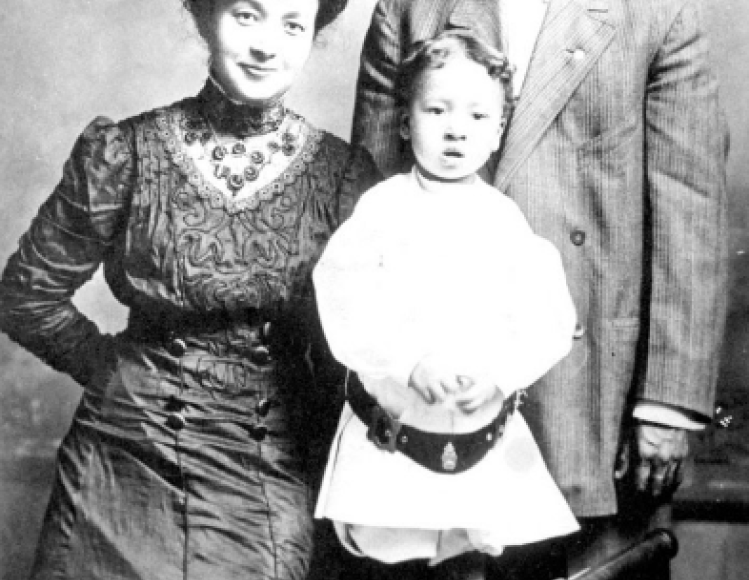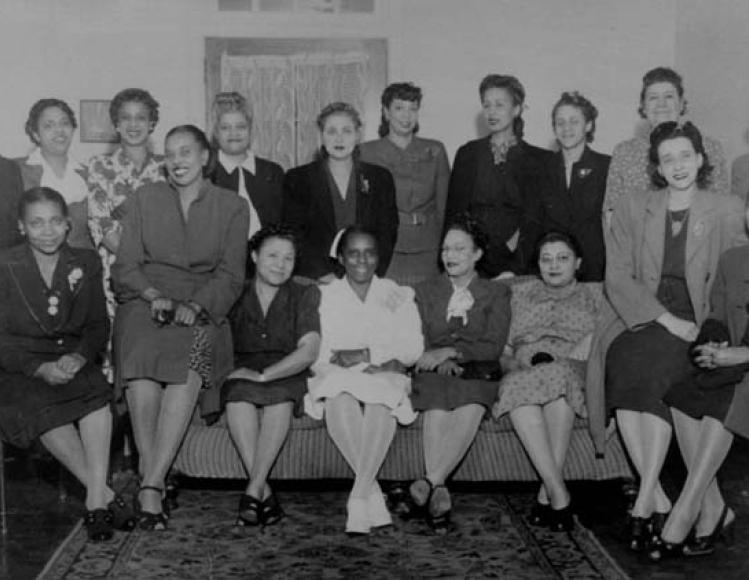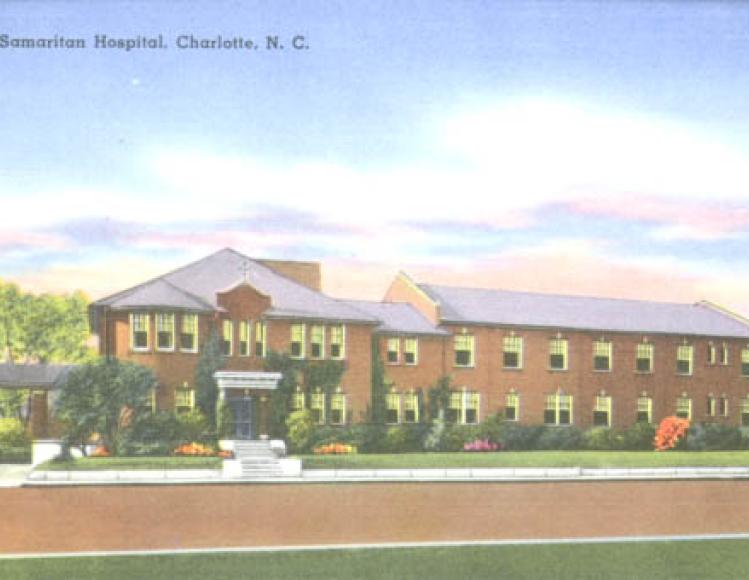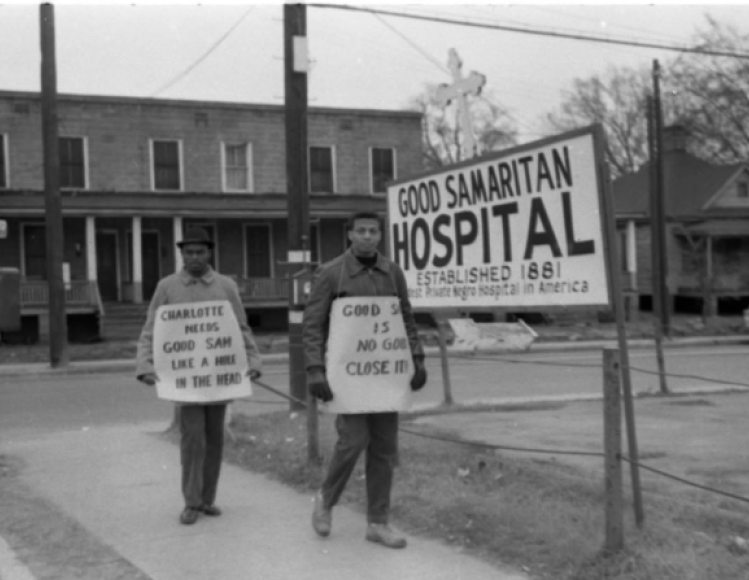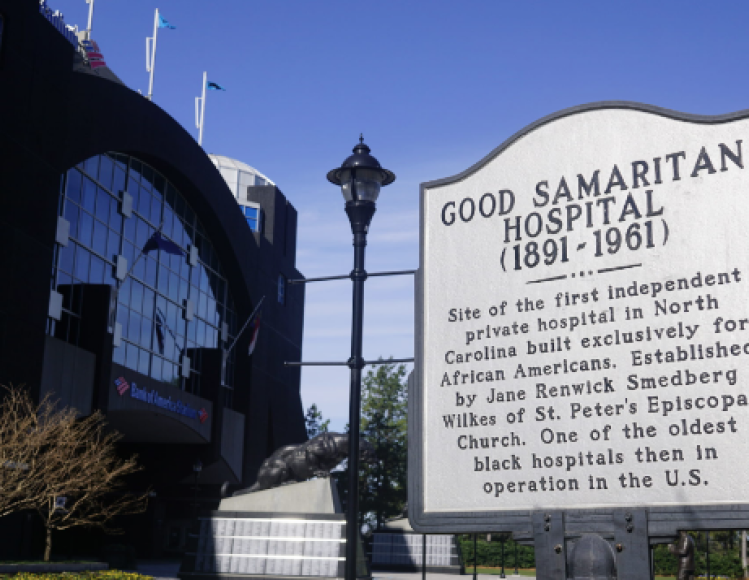
Good Samaritan Hospital: Paving the way for progress
May 26, 2020
In 1887, local philanthropist Jane Renwick Smedberg Wilkes (1827-1913) enabled the Right Reverend Joseph Blount Cheshire (1850-1932), a representative of the North Carolina Episcopal Diocese, to purchase a plot of land at 411 W. Hill Street for the construction of a black hospital. On December 18, 1888 the first cornerstone of Good Samaritan Hospital was laid in a ceremony attended by both black and white Charlotte residents. Construction of the hospital finished in 1891 and, on September 23 of the same year, the hospital opened for business. Good Samaritan Hospital was the first privately funded black hospital in North Carolina.
Fundraising for this hospital was largely left to local black churches and community leaders like Mrs. Wilkes, who worked tirelessly on behalf of the hospital. She wrote to every Episcopal diocese in the country, as well as to many of her friends and family members who lived in New York, her home state. She sent so many bequests for financial support that one of her brothers asked her to cease. Intense fundraising efforts by black churches, Mrs. Wilkes, James Buchanan Duke (1856-1925) and W.R. Bier led to the construction of a modern addition that doubled the size of the hospital in 1925.
During a time when many businesses did not employ people of color, Good Samaritan Hospital offered an opportunity for black doctors to practice medicine in Charlotte. Dr. James A. Pethel worked at the hospital from 1904-1950. Dr. J.T. Williams and Dr. D.E. Caldwell were the first two doctors at the hospital, and Dr. Blackman was one of the first, and only, surgeons to practice at Good Samaritan.
Separate was never equal. Good Samaritan struggled to maintain services as they depended on the community to donate blankets, food and other supplies. The lack of basic diagnostic tools, such as a pathology lab or an x-ray department, in the hospital often hindered doctors and nurses in the practice of medicine. But today, many black Charlotteans will proudly say they were born at “Good Sam.”
The Old North State Medical Society, a society established for black physicians who were prohibited from joining the American Medical Association, was established around the same time that Good Samaritan was built. In 1903, Good Samaritan Hospital established its own School of Nursing, with the goal to train nurses to work in the hospital, as well as give young black women the opportunity to work in an “honored” profession.
As one of the only black hospitals in North Carolina, Good Samaritan Hospital served Charlotte’s black community in addition to black patients throughout North Carolina and surrounding states, including South Carolina, Virginia, Georgia, Tennessee and one patient from Wisconsin in 1902. In 1911, the hospital treated 81 patients from a train crash in Hamlet, NC which cemented the hospital’s reputation in North Carolina as a prestigious black hospital.
The Good Samaritan Hospital Auxiliary was another source of community support. The auxiliary offered assistance to hospital staff and patients.
The decline of Good Samaritan coincided with the Civil Rights Movement. Under the leadership of Dr. Reginald Hawkins, protests outside of the hospital led local leaders to finally decide the fate of the facility in 1962. Shutting the hospital down and selling it became a huge goal of Charlotte’s black community, as they hoped integration would provide access to the tools and methods previously unavailable to black patients at Good Samaritan.
Good Samaritan Hospital was sold to the City of Charlotte in 1961 for one dollar and became the Charlotte Community Hospital, which was an integrated hospital associated with Charlotte Memorial Hospital (now known as Atrium Health). In 1982, the hospital was shut down and converted into Magnolia’s Rest Home, and in 1996 the Rest Home was torn down to make way for Ericsson Stadium, now known as Bank of America Stadium, in 1996.
Though the building is gone, the memories remain. The story of Good Samaritan is an integral part of the history of Charlotte during the era of segregation. It is a testament to all black men and women who worked tirelessly to provide for the needs of others regardless of race, in spite of the limitations thrust upon them.
--
Citations
Lunsford, Brandon. “Good Samaritan Hospital.” The Charlotte Museum of History. Accessed March 2020.
https://charlottemuseum.org/good-samaritan-hospital/
“Old Good Samaritan Hospital.” Historic Landmarks Commission. March 6, 1985. Accessed March 2020.
http://landmarkscommission.org/2016/11/09/old-good-samaritan-hospital/








